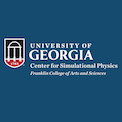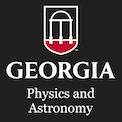Some of the key open questions in galaxy evolution are how gas flows into and out of galaxies, and how this gas gets converted into stars over time. A primary challenge in observing distant galaxies is that the light emitted by them is often too faint to allow detailed studies. Absorption lines in the spectra of background quasars can be used to probe gas in and around galaxies at various stages of evolution, and thus provide powerful probes of the history of star formation and chemical enrichment in galaxies. We have used this technique to track the build up of "metals" over the past ~11.5 billion years, uncovering both, a discrepancy relative to the models in the observed amount of metals in the more gas-rich galaxies, and a very high level of metals in the less gas-rich galaxies. We are now pushing the limits of this technique to reach galaxies in the first ~1 billion years after the Big Bang. Measurements of element abundances in this early epoch can help to constrain the initial mass function of the early generations of stars. Furthermore, spectra of gravitationally lensed quasars allow us to measure spatial variations in element abundances in the foreground galaxy. We have also succeeded in obtaining "3-D spectra" of some galaxies and measuring the flows of gas in and around them. We will discuss how all of these observations are helping to shed light on various aspects of galaxy evolution.
Events Calendar View
-
Departmental Colloquium
Sep 27, 2018
Using "Shadows" of Galaxies to Probe Interstellar and Circumgalactic Gas
-
Applied Physics Seminar
Sep 28, 2018
Applications of Atomic Physics and Condensed Matter Physics in Studies of the Interstellar and Circumgalactic Medium
The interstellar space in the Milky Way contains diffuse gas and solid dust grains. There is constant recycling of matter and energy between this interstellar medium (ISM) and the stars. Likewise, there is constant recycling between galaxies and the circumgalactic medium (CGM). I will describe two applications of atomic physics and condensed matter physics relevant to our studies of the ISM and the CGM. First, I will describe our ongoing efforts to improve the atomic physics needed for interpretation of absorption-line spectroscopy of the ISM and the CGM. This work is motivated by the fact that the inferred properties of the gas depend sensitively on the atomic parameters used for the spectral features, e.g. the oscillator strengths used for the relevant transitions, which remain uncertain for a significant fraction of the transitions. Our work includes calculations and compilations of oscillator strengths for the lines of greatest interest, and examination of their implications for studies of distant galaxies. Second, I will describe our ongoing efforts to determine the nature of the solid particles (dust grains) in the ISM and the CGM. We have made the first detection of silicate dust grains in distant galaxies out to redshifts z~1.5. The dust grains in these distant galaxies appear to be more silicate-rich than the grains in the Milky Way ISM. Furthermore, in some cases, these grains appear to be crystalline, unlike the amorphous grains observed in the ISM of the Milky Way. These differences may be caused by differences in grain properties (e.g. the grain composition or size distribution), or differences in their environment (e.g. cosmic ray fluxes). Improvements to both the atomic physics of the relevant transitions in the ISM/CGM, and the condensed matter physics of dust grains mixed in with the diffuse gas will be crucial for improving our understanding of the evolution of stars and galaxies.
-
CSP Lunch Seminar
Oct 2, 2018
Generic Structural Transitions in Macromolecular Systems

Guest: Prof. Michael Bachmann, Center for Simulational Physics, UGA
Tuesday, October 2, 2018 12:30 pm - 1:30 pm
Location: CSP Conference Room (322) -
Departmental Colloquium
Oct 4, 2018
The Third Woman to Ever Win Nobel Prize in Physics for Laser Breakthrough: Informal Discussion Over Coffee
Three scientists from the United States, France and Canada have been awarded the Nobel Prize in physics for advances in laser physics. The Swedish Royal Academy of Sciences on Tuesday awarded half the 9-million-kronor ($1.01 million) prize to Arthur Ashkin of the United States and the other half will be shared by Gerard Mourou of France and Canada's Donna Strickland. The academy says Ashkin developed "optical tweezers" that can grab tiny particles such as viruses without damaging them. The awarding of the Nobel Prize in physics to Strickland has ended a drought for women winning any of the prestigious prizes. Strickland is the first woman to be named a Nobel laureate since 2015. She is also only the third to have won the physics prize — the first was Marie Curie in 1903. [http://time.com/5412361/nobel-physics-2018-laser/]
We will discuss the significance of the discovery and the role of women in physics in an informal setting. The fact that Strickland's Wikipedia page has only appeared today is telling. It took a Nobel prize for Donna Strickland to be noticed enough to have a (short) Wikipedia page written about her. Another example of how womens' contributions to science go unnoticed and uncelebrated. [www.theguardian.com]
-
Departmental Colloquium
Oct 11, 2018
Exploring Complex Free Energy Landscapes with Innovative Monte Carlo Simulations

Guest: Dr. David Landau, Center for Simulational Physics, UGA
Thursday, October 11, 2018 3:30 pm - 4:30 pm
Location: Physics Auditorium (202)Complexity is everywhere in nature, and it often manifests itself in the existence of a rough free energy landscape that is extraordinarily difficult to investigate. Computer simulations have become the method of choice for studying a wide variety of systems, but traditional algorithms fail when the free energy has multiple minima and maxima that may be widely separated in phase space. We will introduce a generic, parallel Wang-Landau Monte Carlo sampling method[1] that is naturally suited for implementation on massively parallel, petaflop supercomputers. The approach introduces a replica-exchange framework involving densities of states that are determined iteratively for overlapping windows in energy space, each via traditional Wang-Landau sampling. The framework is valid for models of soft and hard condensed matter, including systems of biological interest. The significant scalability, performance advantages, and general applicability of the method are demonstrated using thousands of computing cores for several quite different models of interacting particles. Systems studied include those possessing discrete as well as those with continuous degrees of freedom, including those with complex free energy landscapes and topological constraints.
[1] T. Vogel, Y. W. Li, T. Wüst, and D. P. Landau, Phys. Rev. Lett. 110, 210603 (2013); Phys. Rev. E 90, 023302 (2014).
-
Applied Physics Seminar
Oct 12, 2018
Combined molecular dynamics-spin dynamics simulations of BCC iron
The understanding of the magnetic properties of real materials demands consideration of both magnetic and structural degrees of freedom as well as the inclusion of possible defects. Using an atomistic model that treats both translational and spin degrees of freedom, we have performed combined molecular dynamics - spin dynamics simulations to study dynamic properties of BCC iron. Atomic interactions are described by an empirical many-body potential while spin interactions are handled by a Heisenberg-like Hamiltonian with a coordinate dependent exchange interaction. By calculating the Fourier transform of spatial and temporal correlation functions, vibrational and magnetic excitations have been studied. Comparison of the results with that of the stand-alone molecular dynamics and spin dynamics simulations reveal that the dynamic interplay between the phonons and magnons leads to a shift in the respective frequency spectra and a decrease in the lifetimes. Moreover, in the presence of lattice vibrations, additional longitudinal magnetic excitations were observed with the same frequencies as the longitudinal phonons. The inclusion of vacancies in the material induces splitting of the characteristic transverse spin-wave excitations, indicating the production of additional excitation modes. By merging two vacancies to form a nearest neighbor pair, we found that these modes become more distinct. Investigation of longitudinal spin-wave excitations revealed interactions between constituent components of the split transverse excitations.
Page 85 of 121, showing 6 records out of 723 total, starting on record 505, ending on 510

